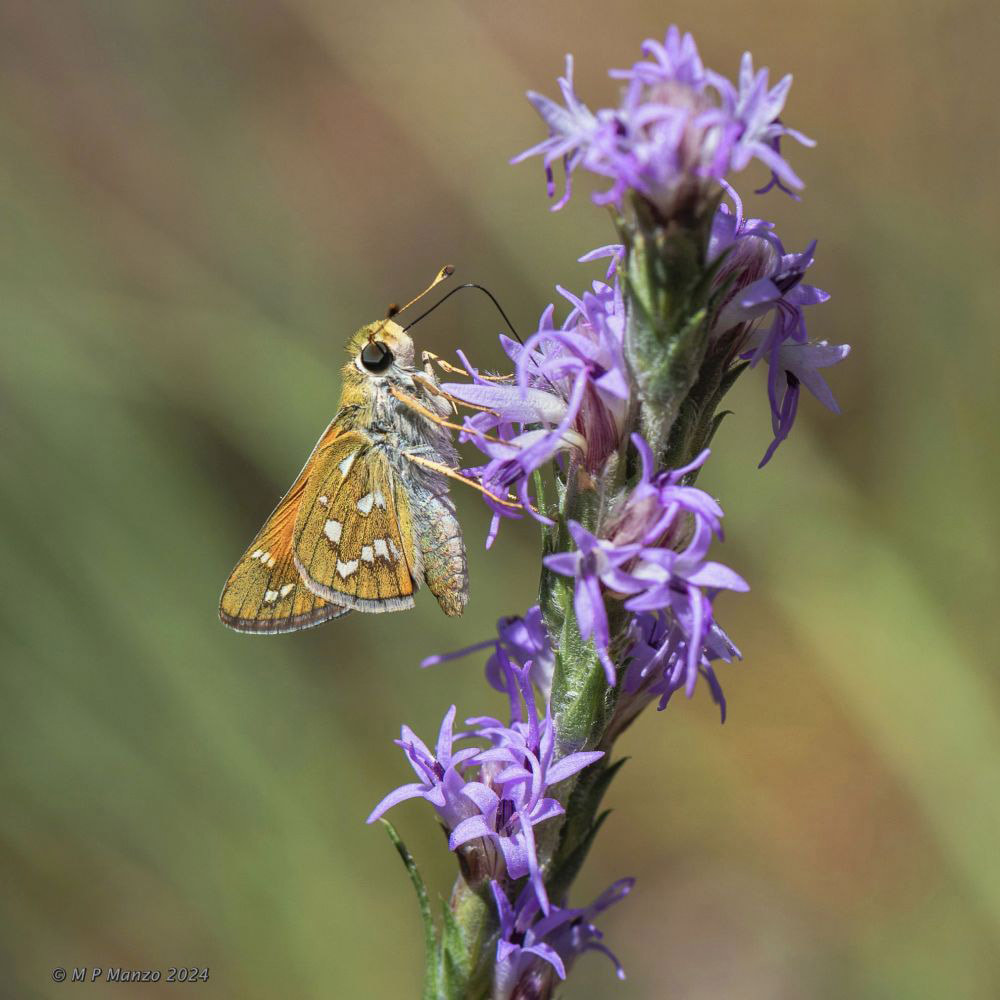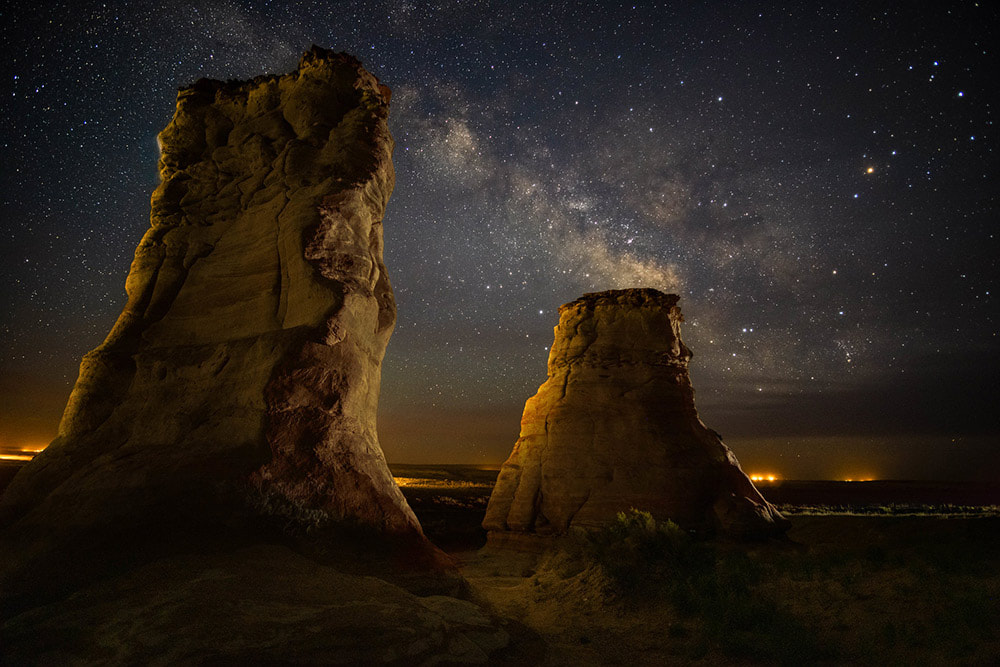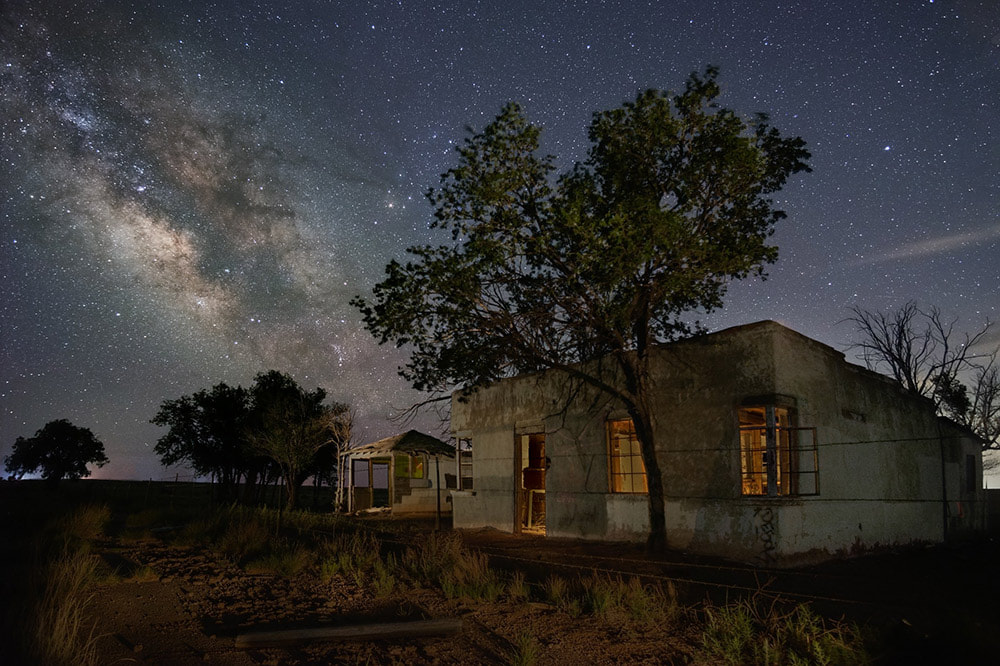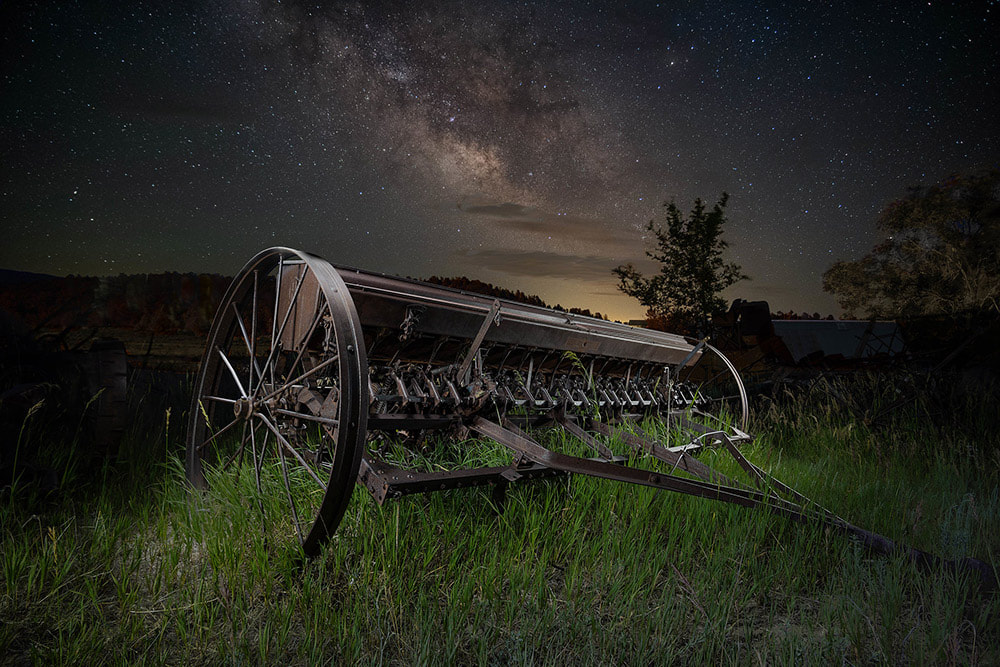|
By Jessica Rath These days, smartphones come with powerful cameras. The more expensive ones come with up to 50 megapixels, separate zoom, wide-angle, and main cameras, and one phone even has a Leica lens. Plus, the built-in software does a lot of adjustments on the fly, so you’ll get a decent photo quite easily. Maybe that’s why the opinion persists that it doesn’t take much to come up with a great photo – I bet, even Ansel Adams heard this. Well, Greg Lewandowski, Mario Manzo, and Matt Schulze, well known to readers of the Abiquiú News, have a different story to tell. They were kind enough to talk to me, and I learned an awful lot! They will be exhibiting their work at the Abiquiú Inn, with an Opening Reception on September 7, from 4 to 6 pm. Mark your calendars. Isn’t it interesting? Greg is from Detroit, Mario is from Dayton, and Matt is from Hamburg/Germany, but all three met here in northern New Mexico, became friends, and quite often join up to explore the beautiful area surrounding us. Here is some interesting background about the three artists and their work. They’re listed alphabetically. Greg Lewandowski Greg and his wife Sharon moved from Michigan to Medanales twenty years ago. In the distant past, he simply used an Instamatic when they went traveling, but once he got more serious about photography he bought a DSLR – a Digital Single-Lens Reflex camera. That’s when Greg’s passion for landscape photography began. He loves the outdoors and hiking in the mountains and takes a lot of pictures. Then he got interested in a special technique: infrared photography. I didn’t really know how this works, so Greg had to explain. It captures the light differently, he said. Actually, there are two kinds of IR photography, on the opposite sides of the infrared spectrum: far-infrared, which is used for thermal imaging (it measures the temperature emitted by an object and makes it visible), and near-infrared, the one Greg uses. His camera has a filter in front of the sensor which blocks all light except for infrared. “A lot of the images I do come out as if they were black and white images, which I always liked. Sometimes there's some color in the image, and that depends a lot on what's going on with the light and the atmosphere”, Greg explained. “Depending on the time of day, you can get some color. There are some wonderful photography programs, it’s like a digital dark room, where I can make all kinds of adjustments to contrast, brightness, color adjustment, and so on. So I like doing that, it's part of the whole process”. “My camera has a 720 nanometer filter. There are three or four different infrared filters you can put on your camera, and I lean more towards one that doesn't have a lot of color but has really sparkling black and white”. There are a few of Greg’s infrared photos at the exhibition, but without a more detailed explanation people might think they’re too weird, he fears. “Once people know that this is indeed an infrared photograph, they would see it differently. Then it will look interesting. I thought, well, I just put them up and see what happens. There are very few infrared photographers that I know, and I don't know anybody else in this area”. The infrared images look stunning to me – almost otherworldly and surreal. One has to look twice, because they stand out right away. Not only the black and white, but also the colored photos have a three-dimensional quality, a depth, that regular pictures seldom have. Here’s a link to Greg’s Flickr account, with some stunning infrared photographs as well as beautiful shots of New Mexico and some foreign countries. Mario Manzo Mario, who is 76, originally came from Dayton, Ohio, and moved to New Mexico in 1997 to work at Los Alamos Labs. He retired in 2012 and currently lives near Ojo Caliente, where he built his home. His passion for photography already started during his high school years and has become an important part of his retired life. He jokes that his cameras take him for a walk and guide him to wildlife, wildflowers, birds, butterflies, and other creatures. But he has another interesting hobby: he flies paragliders. Just listening to him made me dizzy! He told me about an astounding flight last Friday, in the Taos area. He was about 14,000 feet up in the air! And he takes pictures while way up there. “So, I'm 2,000 feet above the peaks, and I'm looking southward towards Taos. It's hard to pick out Wheeler Peak because it's a wide angle view. Things are quite small, a little bit distorted in the distance. They look a little farther in the photo than they do to the naked eye. But it's a beautiful picture with the evening light and shadows. It was in the late afternoon, with puffy clouds”. When Mario told me about this shot, I hadn’t seen it yet and tried to imagine what it would look like. The actual image surpassed my imagination and I wish I wasn’t such a scaredy-cat. Like Greg, Mario works extensively on each image, after it is taken. “The significant thing about digital photography is the processing, and people don't realize that”, he told me. He points out that cell phones and cameras produce a processed image – the brightness range has been affected and balanced out, and lots of important things are done by the camera or the phone. Learning how to do that manually is quite a process, and he is constantly improving his skills to make the picture beautiful and looking real. “RAW file is the way to go if you're serious”, is Mario’s opinion. “This means that all of the data that was recorded by the camera when you took the photo are there, and makes them available for manipulation: brightening dark areas, masking, and area adjustments, and things like that. Often you have to touch the bright areas a little bit and bring them down so it doesn’t look washed out”. “I use editing because I am making pictures that may hopefully get printed. Every time you take an image, you get excited. Oh, this one's going to be great. Then you spend an hour with it, fixing it. But the intention is often that big, beautiful print on somebody's wall”. It reminds me of the time when people had to develop film, even then a skilled photographer could apply a lot of influence. Mario mentioned Ansel Adams, he wouldn’t just take his films to a photo developing store. He’d spend a lot of time on the final picture, judge how long it would stay in the solutions, make different area exposure manipulations, and so on. “It's not like, you just take a picture and then that's it”, Mario continues. “My goal is to make a beautiful picture of what was captured by the camera. When I go on a foray with my gear, I'm looking for a beautiful scene or some other beautiful natural object”. And Mario told me a lovely story to illustrate his process. “A few days ago I was in the mountains near Espanola, in the foothills of the Jemez Mountains. We launch our paragliders from there. As I was leaving, I carried my backpack with three cameras and some cutting tools. After I walked about 50 yards, I spotted a skipper butterfly; he was sitting on a flower that I had been looking at earlier. Here was this little Skipper, golden and orange, and he was in this beautiful light. He looked like an absolute living jewel of a creature. And he was in feeding mode. I knew that he's going to tolerate my presence as long as I don't blunder about and move reasonably slowly. So I put the pack down, took the right camera, put it on the monopod, and I clicked away for a few minutes.” The result is the gorgeous picture above. Mario has a Flickr account as well, with lots of gorgeous photos of close-up birds, wildflowers, and butterflies, also lichen (which I love), landscapes, and paragliding samples. And there are more images here! Matt Schulze Matt grew up in Hamburg, Germany and was introduced to photography by his father who developed and printed his own photos. Matt helped him in the darkroom. He emigrated to the US in 1984 and moved to Santa Fe in 1985. He became a videographer in 2002 and started his own video production business which he’s still running. In 2015 Matt got his first digital photo camera or DSLR and he has been taking photos ever since. His specialty is astro-photography, something I knew nothing about, but he kindly explained this fascinating process. After I saw the photo above, I had to ask: Do you need some special tools to take pictures such as this? “No, you don't need any special equipment other than a camera and maybe a wide angle lens and a tripod, but you have to know how to expose that. These pictures are constructed”, Matt made clear. “Let's take that Elephant’s Feet picture as an example”. “I climbed up a little hill so I got elevated a little bit, and then I came up with a composition so that the two were nicely arranged. When the sun has gone down and it's not quite dark yet, that's when I take my first round of pictures. All the while the camera never moves. That way I get the foreground as a security shot, in case some of my later shots fail. And then I wait until it's dark, until the astronomical twilight has passed, which is about an hour and a half after sunset”. Actually, Matt backs up a little here. “I want the Milky Way in the picture. I know where the Milky Way will be, and so I arranged my composition so that when it gets dark, there will be the Milky Way. And then I start taking my first exposures, and these are made for the night sky. I disregard the foreground in these images, because the night sky needs its own exposure settings. Now I take a number of pictures, and after that I start illuminating the foreground again”. “The next step is to illuminate the foreground. For that I use a flashlight”, Matt continues, “The foreground needs its own exposure settings. I never shine the light onto my foreground from the same position as the camera. I walk around my subject, taking several photos of the light shining from different angles to bring out the texture in my subject. I trigger my camera with a remote. And when I put them into Photoshop, I can blend them together perfectly because the camera never moved”. Well, I’m impressed: for one final picture, Matt can spend hours, maybe days on a location, shoot lots of pictures, and then spend a couple of hours with Photoshop to put it all together. This must take a lot of patience, I guess. The many layers definitely give a sense of luminous depth that regular photos don’t have. Matt told me more about this process: “Often, I see things like an old dilapidated car or some old farming equipment or an old ruin somewhere, and I go in the daytime to take a scouting shot of it. Next, I photograph it at night and when I start to light it out. It takes on a whole different quality”. “I do a lot of daytime pictures, but certain objects look pretty ordinary and boring in the day. But you take them at night, and you start putting lights on them, and they start looking very, very interesting”. “Last year we saw an old farm, we drove by there on the way from somewhere else, and there was snow on the ground. We took some scouting shots in the daytime. There was an old barn, and there was some old farm equipment.
We went back there in June, found out who owned the property and got permission to enter. I created a few fabulous shots at that old farm. There was one shot which is my favorite, it's of an old seed spreader. It almost looks like a musical instrument, farmers tow it behind a tractor, and it rolls out seeds. It was really old”. Look at the gorgeous shot above! “These night images are really about the objects in the foreground and it is my intention to convey the feeling of mystery I get at night. The stars participate to fill out the black void that would otherwise occupy the top of the image”. If you want to see more of his work, please visit Matt's Flickr Photo Album: there are luminous night skies, old buildings, cars, and train stations, hoodoos at Bisti Wilderness, and other gorgeous photos. Matt and Greg often go on photography trips together. They met at the Community College in Santa Fe, when they both took a class there – about photography, of course. Mario sometimes joins as well. I was so impressed when I talked to them, each one with a unique and unusual technique. Infrared photography. Taking pictures while paragliding. Astrophotography. Once again, Abuquiú unites stellar artists from different parts of the U,S., even from a different continent. A warm Thank You to Greg, Mario, and Matt for granting me these interesting interviews. Don’t miss your chance to meet them in person at the Abiquiú Inn on September 7!
5 Comments
Sara Wright
8/30/2024 07:29:03 am
I loved this article - Having always been in love with nature I wanted so much to become a professional photographer because for me at least nature's art is more astonishing than any painting could be and yet it's 'both and' because I love art too.. BUT as a severely dyslexic person who literally confuses left and right to such a degree that as a stumbling teenager I lost my way in the halls of academia I had to start wearing a ring on my left hand to keep me sane - so you get the idea..After trying to use a real camera I eventually gave up. iPhones released me from my despair and now I take unedited photos of virtually anything I choose although I do not have a fancy iPhone - I do not edit anything that I photograph relying on grace to capture whatever... So seeing these stunning photographs was a real treat for me. I also believe that our culture has made an artificial distinction between photography and art - Thanks so much all three of you!
Reply
8/31/2024 07:28:34 am
Thank you Sara for your nice comments. It's great you have learned to use your cell phone to make photos. I enjoy shooting with mine, composing on the large screen.
Reply
Zoe
8/30/2024 08:44:05 am
Wow such a neat article. Interesting to see how different and interesting each of these three photographers is. Such amazing work!
Reply
Teresa L McClure
8/30/2024 09:01:26 am
What a great article! I have enjoyed these 3 gentlemen’s are as it appears in the news. I has NO IDEA all of the work after the shot is taken. Fascinating!!
Reply
Christopher C Kunz
9/13/2024 12:08:25 pm
Stunning work and great insight from all three artists. I went to Mario Manzo's website and saw his wonderful work. Thanks for such a great article.
Reply
Your comment will be posted after it is approved.
Leave a Reply. |
Submit your ideas for local feature articles
Profiles Gardening Recipes Observations Birding Essays Hiking AuthorsYou! Archives
October 2025
Categories
All
|









 RSS Feed
RSS Feed